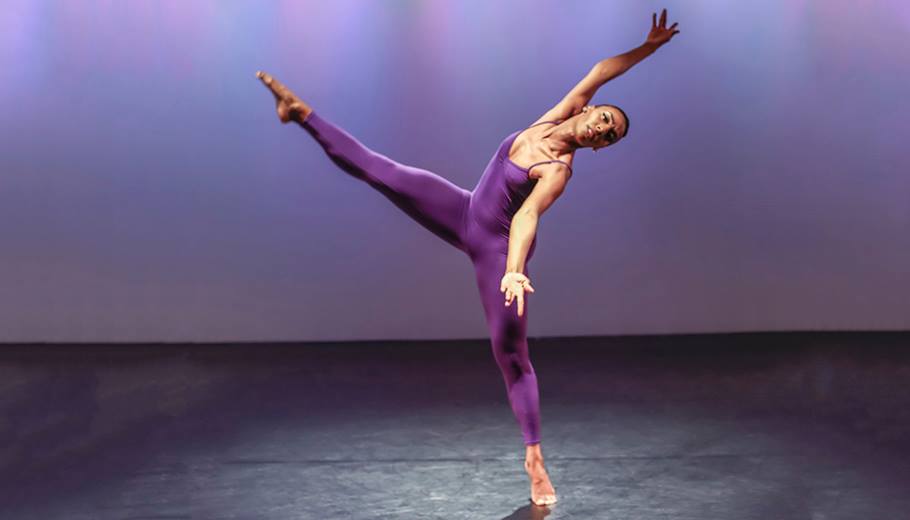 In celebration of its 47th year, the Philadelphia Dance Company presented BLACK STEAM. The spring program featuring two world premieres, “Box Out” and “New Fruit”, as well as two reconstructed works.
In celebration of its 47th year, the Philadelphia Dance Company presented BLACK STEAM. The spring program featuring two world premieres, “Box Out” and “New Fruit”, as well as two reconstructed works.
“Box Out” is a new work choreographed by Dawn Marie Bazemore. Listed with the piece in the program is a quote from poet Nikki Giovanni—“We didn’t write a constitution; we live one. We didn’t say WE ARE THE PEOPLE; we are ONE.” The last statement in this quote introduces an important aspect, present in each moment of the full program, despite the varied roster of new and old works. They are one. Each dancer performed with the proud elegance achieved through a shared communal effort. Regardless of featured roles and various groupings, it is clear that the entire company is dancing together.
Inserted between the two world premieres, “Sweet Agony” features choreography from Gene Hill Sagan, reconstructed on the current company. With a sound score comprised entirely of Teddy Pendergrass’s powerful voice, it is commendable that the dancers manage to not be swallowed by the music. The choreography progresses through legato sections, culminating in sharp, quick movement with dancers frequently entering and exiting the stage. As the technical demand of the choreography increases, so too does the enjoyment of the dancers. This is evident in their profound indulgence in movement quality, despite the difficulty of this speed-driven tempo. Each dancer seems to savor the experience more as the piece develops. In an art form that can often be driven by an all-encompassing seriousness of mood, it is refreshing to witness this sincere joy. As an audience member behind me commented, “That was… yes.”
Christopher L. Huggins’ “New Fruit” premieres as the third piece of the performance. As stated in the program, it offers “a glimpse into the unchanged landscape of the cycle of sanctioned violence on Black/Brown Bodies in America.” This work utilizes the original “Strange Fruit” song as well as various contemporary pieces of music. The movement draws upon modern, ballet, and hip-hop vocabulary, highlighting both the versatility of the dancers and multiplicities within the subject at hand. The last lyrics in the piece state “so what you gonna do?” after which the music fades out and the dancers verbally ask the same question of the audience. An abrupt blackout follows. We are not given time to mentally answer, nodding to the immediacy of the matter presented. This question is not meant to be digested over time.
“A Rag, A Bone And A Hank Of Hair” ends the program, featuring restaged choreography from Talley Beatty. With female dancers in bright, solid-colored dresses and male dancers in similarly vibrant pants and tops, the performance evokes a celebratory conclusion. It serves as a friendly reminder of the complexities surrounding dance. It can be playfully quick, and uplifting. It can be smooth, indulgent, or festive. It can be a representation of some of our contemporary world’s most troubling realities. But it’s often more than one of these at the same time. Whatever it may be, PHILADANCO is doing it together in a way that leaves the audience honored to have witnessed their strong community.
[Kimmel Center, 300 S Broad St.] April 13-15, 2017; kimmelcenter.org
